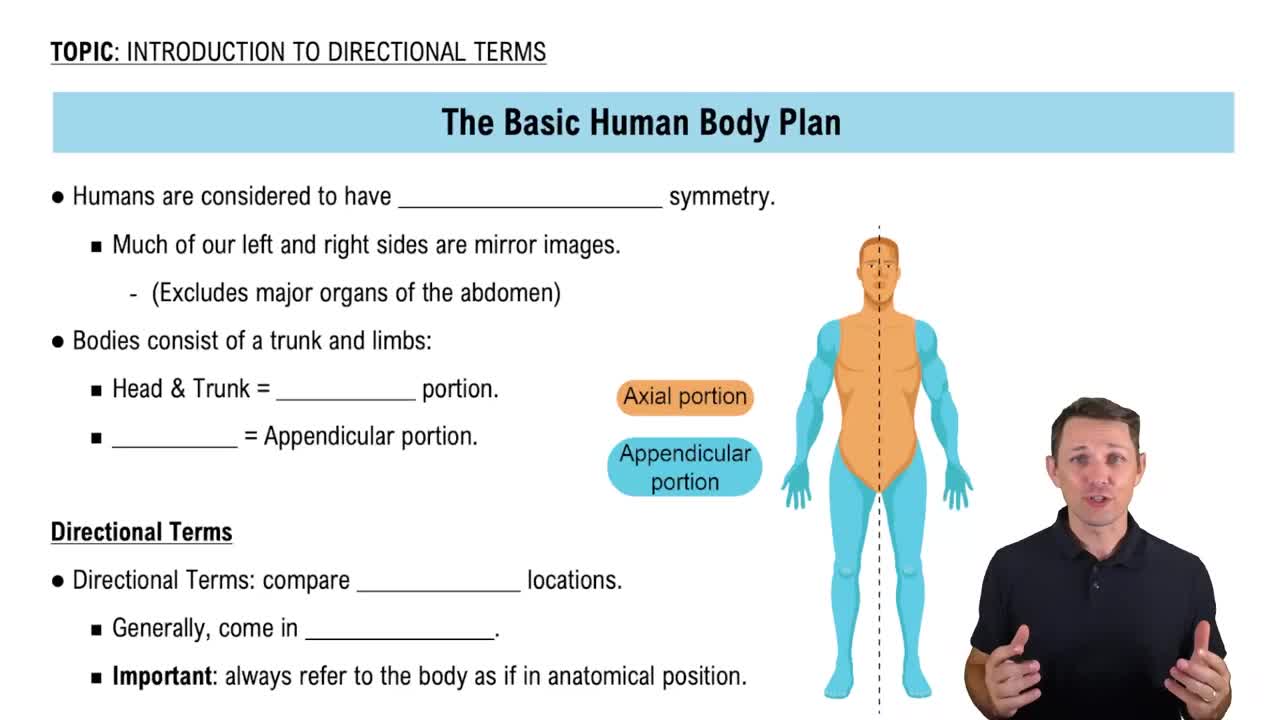Here are the essential concepts you must grasp in order to answer the question correctly.
Muscle Pairs of the Abdomen
The four primary muscle pairs that work together to compress the abdominal contents are the rectus abdominis, external obliques, internal obliques, and transversus abdominis. These muscles play a crucial role in maintaining intra-abdominal pressure, supporting the spine, and facilitating movements such as bending and twisting.
Recommended video:
Introduction to Muscles and Muscle Tissue Example 1
Fiber Direction and Strength
The arrangement of muscle fibers in the abdominal wall contributes significantly to its strength and stability. For instance, the fibers of the external obliques run diagonally, while the internal obliques run in the opposite direction, creating a crisscross pattern that enhances the wall's ability to withstand forces and provide support during movements.
Recommended video:
Introduction to Directional Terms
Spinal Movement and Muscle Function
Certain abdominal muscles are responsible for specific movements of the spine. The external and internal obliques facilitate lateral rotation, while the rectus abdominis primarily acts to flex the spine. Understanding these functions is essential for analyzing how the abdominal muscles contribute to overall body mechanics.
Recommended video:




